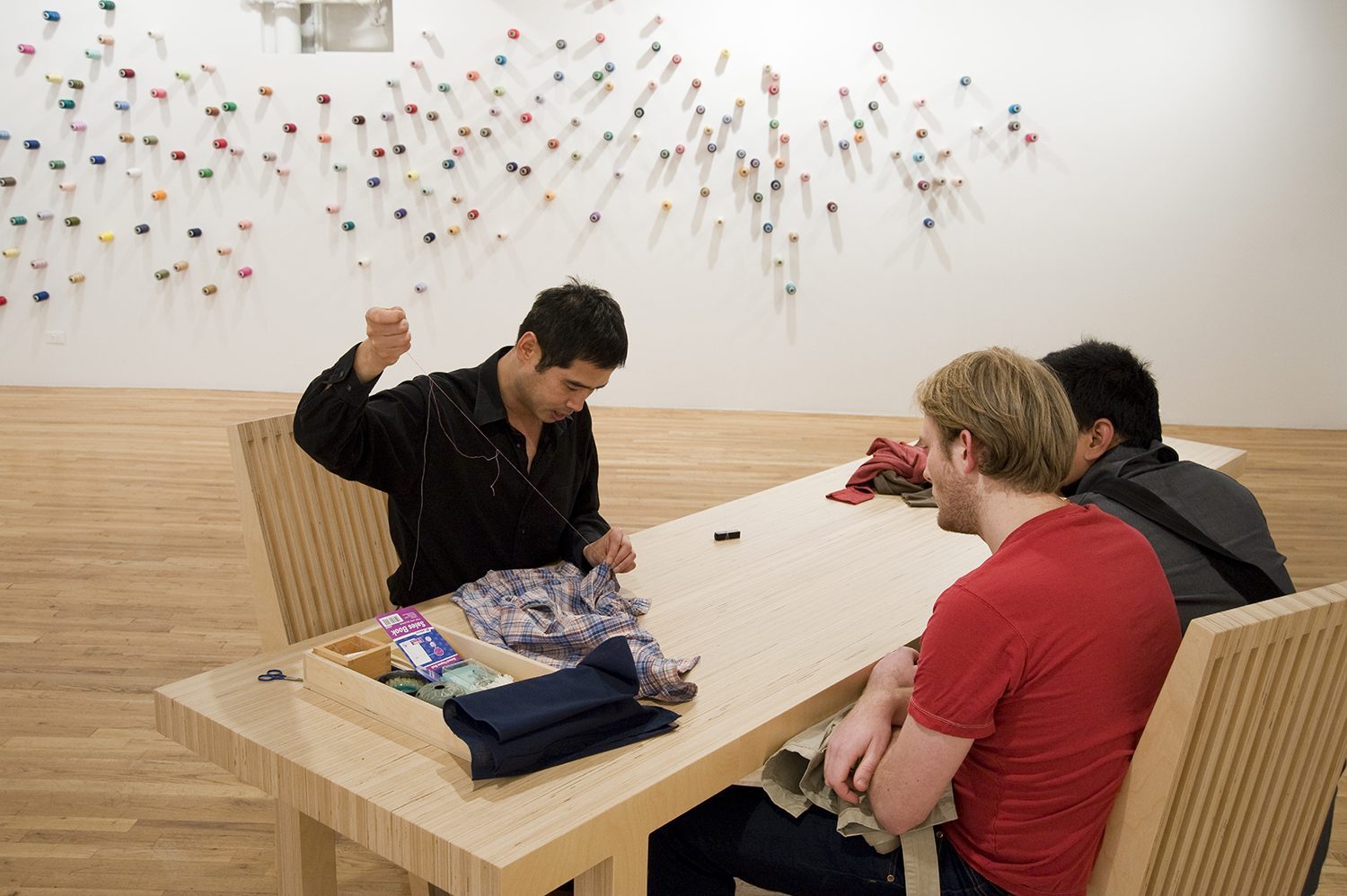
Participate in artist Lee Mingwei´s work The Mending Project!
Bring a torn piece of garment and let it be repaired by a mender in the exhibition.
During the exhibition period for New Materialism, Sep. 5th – Nov. 11th, 2018, it is possible to bring your own piece of clothing in need of mending to Bonniers Konsthall. Here, the piece will be mended as an act within the artwork The Mending Project. When turning in your shirt, trousers, skirt, jacket or similar, you will sit down by a long table together with a person that repairs your clothing, while you talk to each other about the memories and meanings this piece of clothing brings to you.
The mending of the clothing will become visible. For the artist, it is important that the reparation of the piece isn’t hidden; on the contrary the idea is to acknowledge the history of the clothing through the mending; as something to celebrate.
Lee Mingwei (LM) in conversation with co-curator Caroline Elgh Klingborg (CEK).
Caroline Elgh Klingborg (CEK): In your piece The Mending Project we see a set of specially produced furniture, a pile of clothes and around 400 spools of thread in a wide range of colours that are attached to the wall. This piece is processed based and will constantly develop over the course of the exhibition. The aspect of time seems to be important for you as an artist?
Lee Mingwei (LM): I truly believe the only thing that is constant is change itself. I try to be mindful of this when I create my work. I find beauty in things that change with time. As the originator of The Mending Project, I created a set of “rules of the game” in order to frame this project in term of time, space and concept. Once the project is activated, a delicate balance among the menders, the visitors, the participants and the gallery hosts who are taking care of the project.
CEK: An important part of The Mending Project is the dialogue that takes place between the mender and the visitor. It is not just about mending a torn piece of cloth, it is as much about the inner mending that brings forward a discussion about memories in relation to a specific garment. When you worked on the concept of the piece, how did you construct/form/think about this act of sharing between strangers?
LM: The Mending Project comes from a deeply personal experience… In 2001, when the World Trade Center was hit by two airplanes on the bright morning of September 11. My husband was working in the building at the time. For the whole day I did not know if he was alive or not… I went home and took out all the clothing we had that needed to be repaired and started mending for hours… Until I heard the doorknob turned, with John standing at the door, covered in ash…. I still have no words to describe what I felt at that moment. It took me 9 years to process this traumatic incident
Although this was the seed for The Mending Project, hopefully one sees mainly grace, kindness and generosity in the installation. The essence of the project is about gift between strangers, sharing stories while mending. Although it would seem like the mender is giving the participant a gift by repairing his/her garment, the trust and stories that are shared by the participant are powerful gifts as well.
CEK: I think that your piece brings forward important skills that are about to be lost. I remember my grandmother who was always mending; everything from bed linen to socks. To throw something away was waste! In today´s consumer society we tend to constantly buy new items and we don´t have the knowledge to mend our torn clothes. Is this something you want to bring forward in The Mending Project?
LM: The gesture of mending for me has different levels of meaning, the most obvious idea is: my piece of clothing is tattered, let me repair it. This gesture of mending could also exist in a completely different level of conversation about the world we are living in today. There are so many things that desperately needed our loving care in politics, the climate, relationships between people, countries… Can we do something about these? I know I am just an artist, let me start with something that is close to me. So let me start with our second skin, which is the clothes we wear.